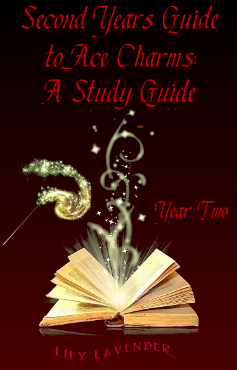Second Years Guide to Ace Charms: A Study Guide
By Lily Lavender
This book is intended for all who need a quick study reference guide for CHRM-201. It has a glossary of terms & its appropriate meanings for the entire course. Each chapter is based on a lesson; where it won't go into grave detail, but will give you the necessary components to study for upcoming tests & assignments. This does not include mid-term & final exams. All detailed information about each topic is in your official lessons with the Professor. DO NOT COPY AS IT IS PLAGIARISM!
Last Updated
Nov. 21, 2021
Chapters
10
Reads
2020
Lesson Five Study Guide
Chapter 6
Synthetic Materials & Mundane Materials
Synthetic material was never used in the past, but are used today. Synthetic materials do not last with magic, but are used as single-use pranks. After three to six months, the object that is made with synthetic materials will vanish. Synthetics are mostly plastics. Mundane materials are from a natural origin with no connection to magic. Mundane materials consists of woods, plant fibers, stones, metals such as iron, & sand. Sand is often used in hourglasses & plywood is used from wood. Invisible inks that are made from plant fibers will usually last for a longer period of time & it will make it harder to reveal the written ink.
Transitional Materials & Magical Materials
Transitional materials that don't have natural energy. When introduced to magic, the item reveals some magical properties. Owls for example, have this type of material. Mundane birds such as falcons & eagles are examples of this. Plants such as mistletoe & some types of wood are also examples. Creatures such as dragons, Demiguise, & unicorn are magical. Items like Demiguise hair fabrics, phoenix feather quills, Dragonhide clothes, & wands are all made from a magical source.



